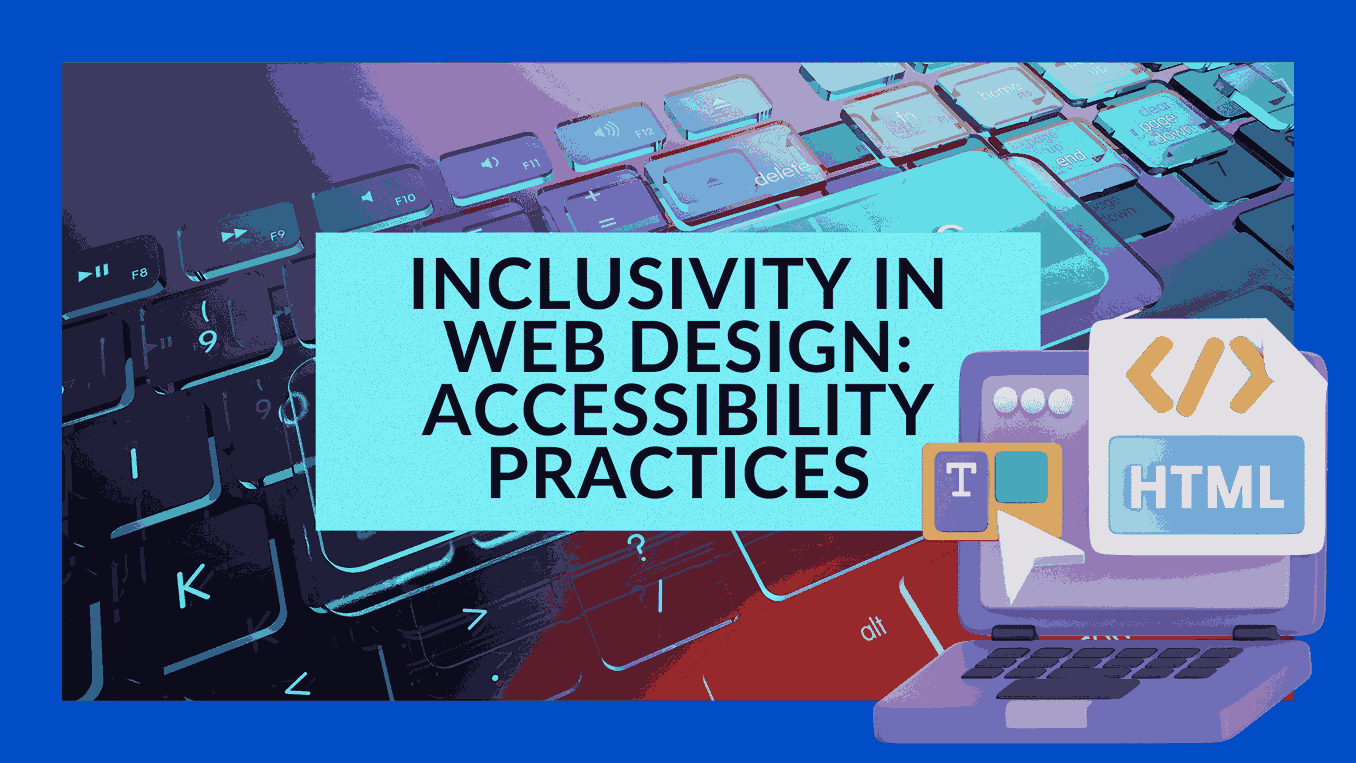Inclusivity in web design: Accessibility practices
- WebOps Platforms Bug Tracking & Feedback Software Web Development & Design


In today’s digital age, creating a web presence is a fundamental aspect of any business or organization. But it’s not just about the look and feel; it’s also about ensuring that your website is accessible to everyone. Inclusivity in web design is not only a moral obligation but also a smart business strategy. It involves breaking down barriers, prioritizing accessibility, and embracing inclusive design principles.
Designing a website that is inclusive and accessible should be a top priority from the very beginning of the design process. It’s about ensuring that everyone, regardless of their abilities or disabilities, can navigate, understand, and interact with your website. Here are some key principles to keep in mind:
1. Proper Color Contrast
Color plays a significant role in web design, but it can be a barrier for users with visual impairments. Ensuring proper color contrast between text and background makes the content more readable for everyone. It’s a simple yet effective way to enhance accessibility.
2. Text Alternatives for Non-Text Content
Images, videos, and other non-text content are essential elements of web design. However, they can pose challenges for users who rely on screen readers or those with slow internet connections. Providing descriptive text alternatives ensures that everyone can understand the content, regardless of how they access it.
3. Optimizing Keyboard Navigation
Not all users can rely on a mouse for navigation. Optimizing keyboard navigation is vital for those who use assistive technologies or have motor disabilities. A website should be navigable using only a keyboard, making it more user-friendly for a broader audience.
4. User Research and Testing
Designing for inclusivity requires understanding the diverse needs of your users. Conduct user research to identify potential barriers, and then test your website with people who have disabilities. Their feedback is invaluable for making necessary improvements.
Inclusive web design goes beyond merely meeting compliance standards; it aims to create a delightful and meaningful experience for all users. It involves thinking about different scenarios users may encounter and providing multiple ways to access information and interact with the website. It also involves ensuring compatibility with assistive technologies and designing for various screen sizes.
Embracing inclusive design principles can help businesses build trust, foster loyalty, and make a positive impact on people’s lives. Let’s embrace the challenge of achieving inclusive web design and create digital spaces that prioritize inclusivity, equity, and accessibility for all.
Web Accessibility Compliance: Legal Requirements and Best Practices
Web accessibility compliance is not just a good practice; it’s often a legal requirement. Governments and organizations worldwide have recognized the importance of making digital spaces accessible to all. Compliance involves following guidelines such as the Web Content Accessibility Guidelines (WCAG) to ensure websites are more accessible for people with disabilities.
Here are some of the key aspects of web accessibility compliance:
1. Descriptive Headings
Properly structured headings make content more navigable, especially for screen reader users. Headings should reflect the content’s hierarchy and help users understand the page’s structure.
2. Text Alternatives for Images
Images can convey crucial information or enhance the aesthetics of a website. Providing text alternatives ensures that users with visual impairments can grasp the content’s context and purpose.
3. Multimedia Transcripts
Videos and audio content should have accompanying transcripts. This feature benefits users who are deaf or hard of hearing and those who prefer to read content.
Meeting these standards can help businesses avoid legal issues, promote inclusivity, and create positive brand experiences for users.
Web accessibility compliance is closely linked to improved user experience and increased market reach. When websites are accessible, they can reach a larger audience, including people with disabilities who were previously excluded. This not only shows a commitment to equal access but also opens up new market opportunities. Inclusive design can attract and retain customers by offering an exceptional user experience for everyone.
By prioritizing web accessibility compliance, businesses can demonstrate their dedication to inclusivity, gain a competitive advantage, and make a positive impact on society as a whole. It’s a win-win situation that benefits both the business and the users.
For further insights, you can explore additional resources on web accessibility:
- W3C Web Accessibility Initiative
- UXPin: Inclusive Web Design
- Impact Plus: Inclusive Design – Making Your Website Accessible
- ADA Site Compliance: Best Practices for Accessible Web Design
- LinkedIn Article on Achieving Inclusivity Through Web Accessibility
So, let’s champion inclusivity in web design and work towards creating a digital world that truly welcomes everyone.





